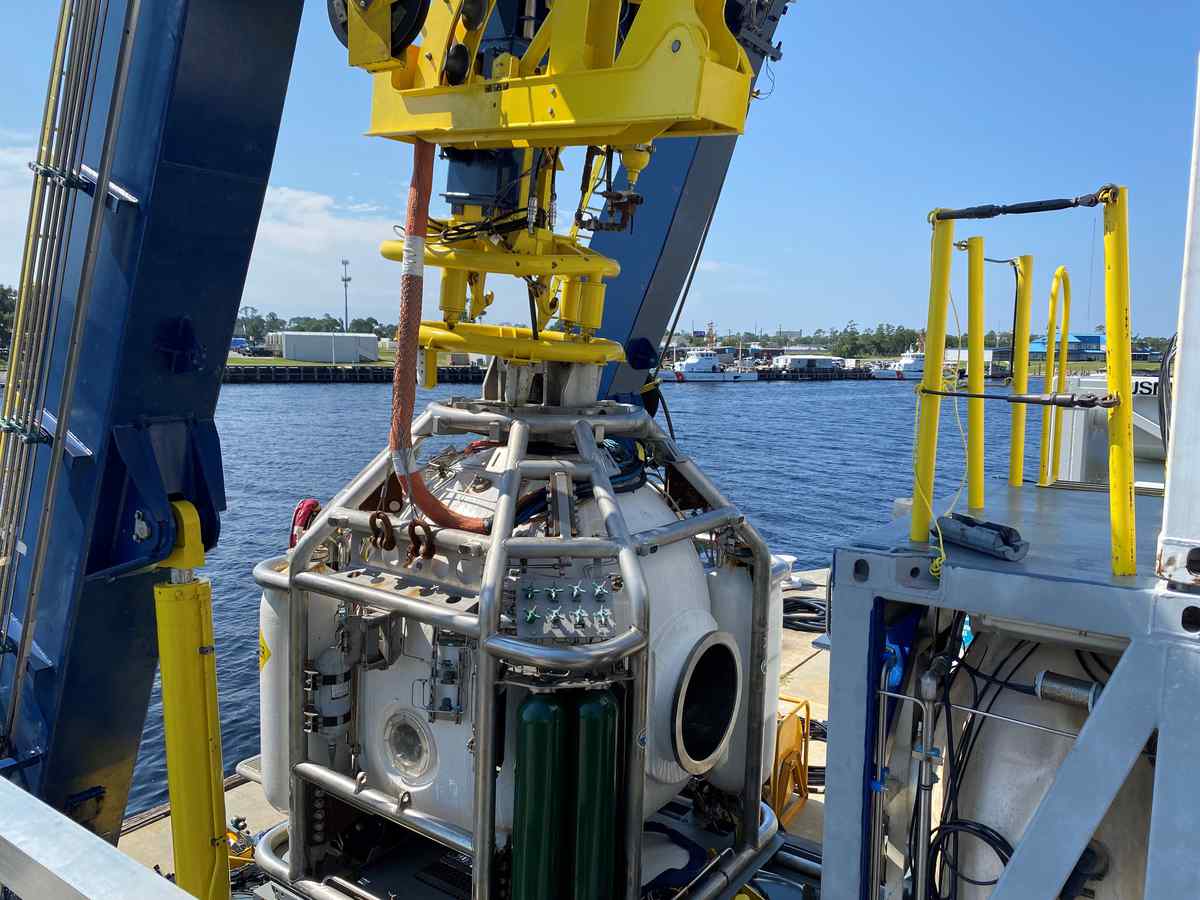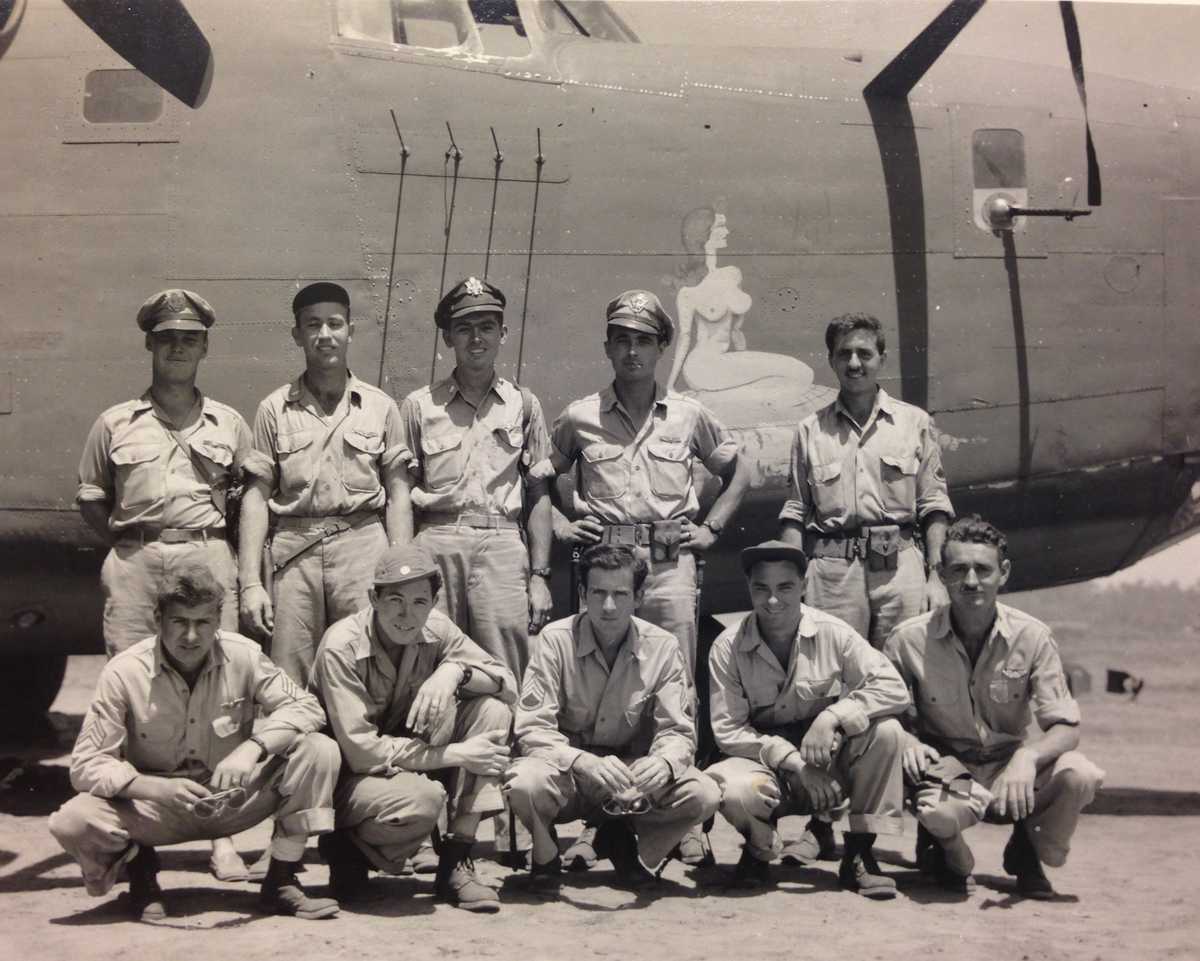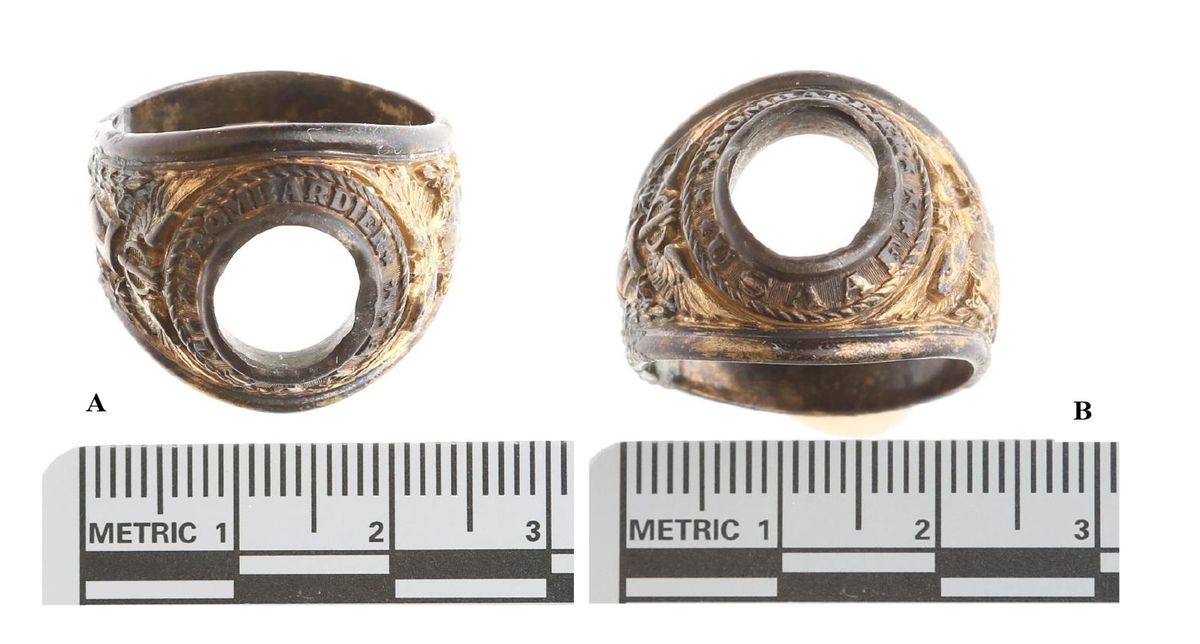
The diving bell used to study the wreckage of Heaven Can Wait in the Pacific Ocean.

Crew photo for the Heaven Can Wait bomber in Papua New Guinea. Second Lt. Thomas V. Kelly Jr. is the middle figure in the back row, standing, with his .45 pistol in a shoulder holster. The ring recovered from the wreckage is visible on his left hand.
12:03 JST, November 18, 2024
The remains of an Army aviator recovered last year from the wreckage of his submerged bomber have been officially identified as those of 2nd Lt. Thomas V. Kelly Jr. of Livermore, California, the Defense Department said.
The Friday announcement came a year and a half after the Navy conducted a dramatic, high-tech descent to the Pacific Ocean crash site in a diving bell, recovering human remains, several dog tags and Kelly’s Army Air Forces ring.
It was Kelly’s family that 11 years ago launched a project to investigate the story of the B-24 bomber nicknamed Heaven Can Wait, produced a detailed report and helped pinpoint the crash site.
“It’s hard to believe,” said Scott Althaus, a first cousin once removed and a professor at the University of Illinois at Urbana-Champaign, who led the family’s efforts. “It’s such an impossible story.”
He praised the Defense POW/MIA Accounting Agency (DPAA), the Navy and Project Recover, the nonprofit that used its underwater resources to find the plane in 2017.
“It’s this collective endeavor that has produced a miracle,” he said in a telephone interview Friday. “And I’m still trying to wrap my head around that.”
Kathy Borst, one of Kelly’s nieces, who never knew him, said in a telephone interview Saturday: “It feels complete. And I think putting his remains, what’s left of them, in the ground in Livermore with his family will feel like closing the book on a story.”
Heaven Can Wait was shot down by Japanese antiaircraft gunners off the coast of the Pacific island of New Guinea on March 11, 1944, taking Kelly and 10 others to their deaths. Kelly was 21.
In the spring of 2023, a team of elite Navy divers and archaeologists from the DPAA conducted a five-week search near Hansa Bay on the northeast coast of New Guinea for Heaven Can Wait.
It was the deepest underwater recovery mission for the DPAA, the government agency that seeks to account for service members missing in action from past wars.
The crash site was in about 200 feet of water about 10 miles from an active volcano.
It was the first time the Navy’s SAT FADS – Saturation Fly-Away Diving System – had been used in such a role, the Navy said.
The diving apparatus, somewhat like a space station, included a pressurized habitat where the divers lived aboard the ship, and a pressurized diving bell, which they used to reach the bottom.
The system allowed them to work in the pressure of deep water for long periods without having to decompress after each dive, the Navy said. They only needed to decompress at the end of the project.
Once on the bottom, the divers exited the diving bell and gathered material from the crash site into big baskets that were hauled up to the ship to be sifted for artifacts.
Despite almost 80 years on the bottom, the wreckage was down far enough that DPAA experts were confident that human bones and material artifacts would be preserved.
The DPAA said Kelly’s remains were identified through dental and anthropological analysis. Scientists from the Armed Forces Medical Examiner System matched DNA from the remains with DNA from Kelly’s family.

A ring identified as having belonged to 2nd Lt. Thomas V. Kelly Jr. recovered from the wreckage of Heaven Can Wait.
The identification was made on Sept. 25. In addition to Kelly’s ring, the divers found two of his dog tags.
Along with Kelly’s remains, those of the plane’s radio operator Eugene J. Darrigan, 26, of Wappingers Falls, N.Y., and navigator 2nd Lt. Donald W. Sheppick, 26, of Roscoe, Pennsylvania, south of Pittsburgh, were identified on Sept. 20, the DPAA has said.
The divers recovered two of Sheppick’s dog tags and a corroded dog tag bearing the partial name of Darrigan’s 23-year-old wife, Florence, as an emergency contact.
In one of his last letters home to his parents, Kelly wrote: “I don’t want you to feel sorry for me. I’m just telling you to appreciate what you have. Even if you don’t think it is much. It is so much. The men fighting here for everyone, they’re doing it for your freedom.”
Althaus said Kelly will be buried in his hometown on Memorial Day.
"News Services" POPULAR ARTICLE
-

American Playwright Jeremy O. Harris Arrested in Japan on Alleged Drug Smuggling
-

Japan’s Nikkei Stock Average as JGB Yields, Yen Rise on Rate-Hike Bets
-

Japan’s Nikkei Stock Average Licks Wounds after Selloff Sparked by BOJ Hike Bets (UPDATE 1)
-

Japan’s Nikkei Stock Average Buoyed by Stable Yen; SoftBank’s Slide Caps Gains (UPDATE 1)
-

Japanese Bond Yields Zoom, Stocks Slide as Rate Hike Looms
JN ACCESS RANKING
-

Keidanren Chairman Yoshinobu Tsutsui Visits Kashiwazaki-Kariwa Nuclear Power Plant; Inspects New Emergency Safety System
-

Imports of Rare Earths from China Facing Delays, May Be Caused by Deterioration of Japan-China Relations
-

Tokyo Economic Security Forum to Hold Inaugural Meeting Amid Tense Global Environment
-

University of Tokyo Professor Discusses Japanese Economic Security in Interview Ahead of Forum
-

Japan Pulls out of Vietnam Nuclear Project, Complicating Hanoi’s Power Plans





















